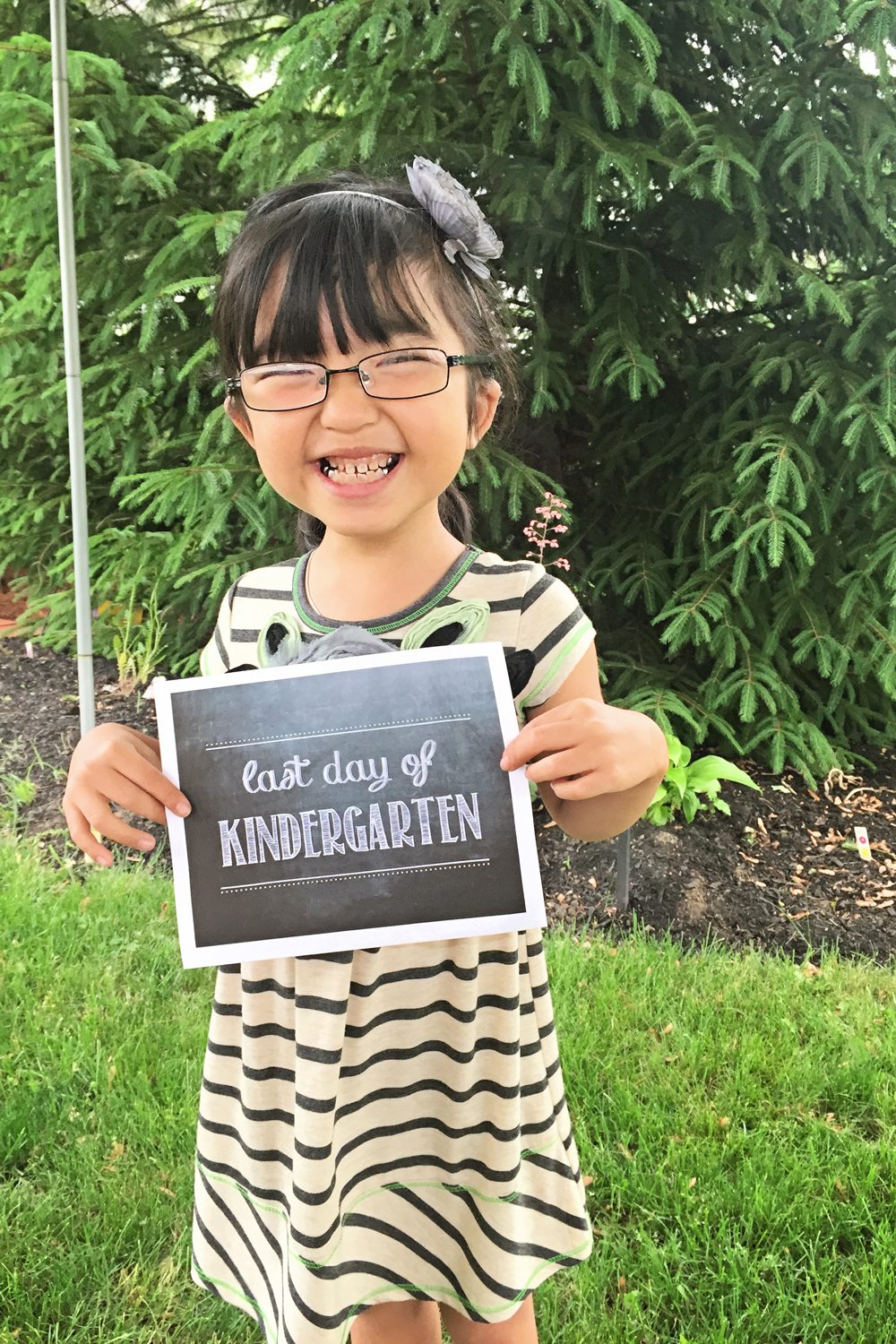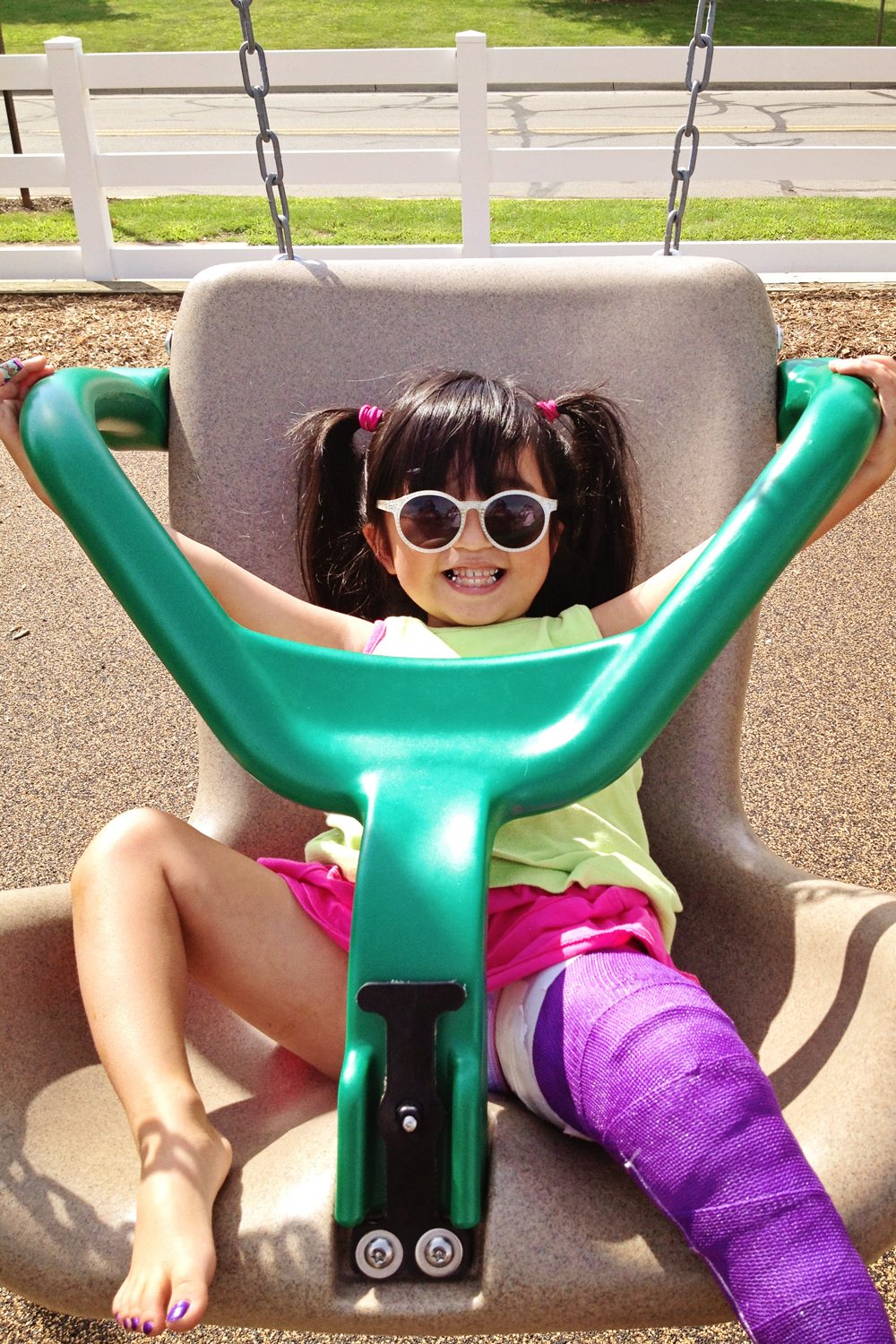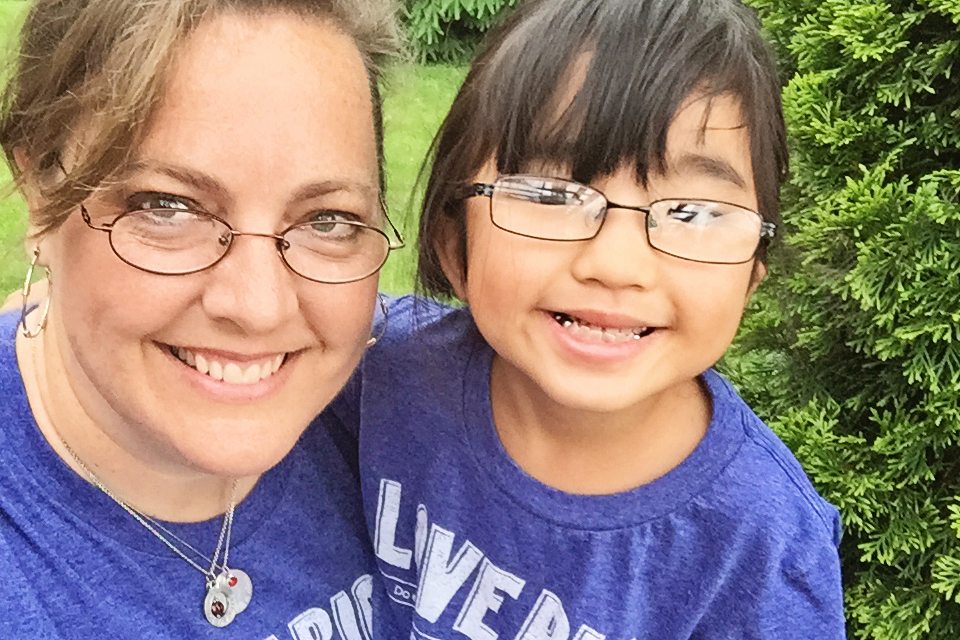God has a sense of humor. Have you experienced it? He knows how to push and stretch us. I am learning not to say “never” because that is just about when He says, “Here you go! This is my plan!”
I am blessed to be the mom of an amazing little girl from China (you can read about our story and that of the one who waits for us here). Olivia is 6 and came home in 2013. She loves to jump and spin and dance and sing. In many ways she is just like any little girl eagerly awaiting to start 1st grade.
But she isn’t.
Olivia lives with a genetic disease called osteogenesis imperfecta (OI), also known as “brittle bone disease.” The day I met her in 2012, I knew that OI was a part of who she was, but I didn’t really know what it meant or how it would impact my life. I was probably a bit ignorant. Probably still am. I just knew that Olivia was the daughter God had chosen for me, and that if He had called me to the job, He would give me what I needed to do it.
I know enough of the “medical stuff” to not sound completely clueless when I talk to doctors, but I am by no means a medical expert. I write this as Olivia’s mom and one who desperately wants to see more kiddos home forever with their families. I am not a medical person. I don’t like doctors or hospitals and I come close to passing out anytime a needle is in my presence – even if I am not its intended target. My prayer is that hopefully in reading this, hearts and minds will be opened further and that the OI diagnosis won’t seem quite as scary. More of the expert info can be found at OIF.
OI can either be passed down from a parent or be the result of a spontaneous mutation. Someone once shared this description to me: collagen runs through our bones and serves a function similar to shock absorbers. If healthy bones are banged, they might get a bruise or a bump. In OI bones, the collagen is “faulty” and so the bones have no option but to fracture or break. One of the goals, then, is to increase the bone density so that it is less likely that the fracture will go all the way through.
There are now more than 8 types of OI – each with its own special differentiating characteristics. Clinically, Olivia presents as type 1. Genetically she is confirmed as type 4. Blah blah blah. What does this mean? I have a daughter who likes to go, who thinks she is indestructible, and who I want to wrap in bubble wrap but can’t because her ortho tells me I’m supposed to just let her be a kid. (I actually think that God has already done that because with as much as she falls and runs into things, we should be living in a full body cast.) Olivia is fully mobile. Many with OI utilize wheelchairs or walkers.
In the 2 years since Olivia has been home, we have had one break. And it didn’t happen from a fall. She was walking down the stairs holding my dad’s hand, her heel grazed the front of the step and it snapped. She never even fell. Just happened. Off we went to the hospital and came home with 2 rods in her femur and a beautiful purple spica cast that stayed with us for 10 weeks. Since that time she has fallen down (and up) stairs, tumbled down hills, slid off swings and landed on her head, and much more. But no more breaks or fractures. Olivia is mild. I have a friend who adopted a daughter from China with more severe OI and she has had a lot of breaks and casts. I know people with “healthy” kids who have had more trips to the ER.
There is no “cure” for OI. There are 2 primary drugs that are given to people with OI – “zole” and “pam”. They are bisphosphonates – OIF or a Google search can give you the nitty gritty details about what that means medically. To Olivia, it means that her bone density is increasing and she is growing. Three times this year we will head down to the infusion clinic at our Children’s Hospital and get her “bone juice” (she gets zole). In a matter of 2 hours we are in and out. Some go more frequently and have longer infusion periods. Just like you and me, each person with OI is unique.
Olivia is a little peanut. At 6 she weighs in at 37 pounds and 41.5 inches. Depending on the cut and style of clothes, she can wear from 3 – 5T. She is not yet to the 5th percentile on growth charts. Olivia will always be smaller than others her age (and it is possible she may never pass the 4 foot mark on the door where we track her growth). Depending on whom you talk to – and which “type” of OI is involved – some consider OI a form of dwarfism. Some will stay small; Others grow to “normal” height. Just like the rest of us… all shapes and sizes.
It is not unusual for those living with OI to have rodding surgery. Because bones are weaker (and in some types have a tendency to curve – with a scoliosis propensity), rods serve as internal splints to help strengthen and straighten. When Olivia broke her femur in 2013, she had two 2mm titanium rods inserted. Olivia has been responding so well to her infusions and growing that we just had a “rod replacement” surgery. We were in the hospital for just under 24 hours and came out with just 6 band aids, a Velcro leg brace, and the cutest little walker you have ever seen.
With Olivia’s OI come loose joints. She can stand on one leg and kick the other up over her head. When she warms up for her dance class and her teacher wants them to push up in a bridge, her shoulders sometimes start to pop out (but never do). Both her ortho and bone clinic have said no to trampolines and bounce houses because they are too risky. I’m good with this.
Along with Olivia’s brittle bones have come brittle teeth – dentiogenesis imperfecta. This isn’t something everyone with OI has. We are just special. In her case, she has all of her adult teeth lined up to come in (not all do). If you look closely, you’ll see that some of them have been capped. Others have a translucent look to them. But her smile is so big you don’t even notice her teeth.
One thing that I have seen consistent across all people – young and old – that I know with OI, is their unbreakable spirit. Their “OI-can” attitude. And a resiliency unlike none I have seen elsewhere.
……..
The other day there was a thread going about OI in one of the Facebook groups. Following is a partial summary of some of the questions and answers that were shared by multiple participants that may give some additional insights/answers. I share this with their permission:
What kind of wheelchair/accessibility needed?
“I don’t have a child OI but have OI (as does my husband). We both use lightweight manual chairs…if kids with OI need a chair (and most will at least at times of fracture or surgery) this is almost always what type of wheelchair it would be. So vehicles can range from vans where you would load the entire chair in as one piece or most of the small lightweight chairs easily fit in a trunk. So a car would not be out of the question depending on your family size. I know lots of adults with OI who grew up in homes that were inaccessible. So ideally you’d have their bedroom on the first floor and a bathroom that they could access. Some have lowered sinks but that’s not all the time necessary. It really is so variable which is also how I would describe day today life in childhood with OI. The thing is that it is already so frustrating enough when a child fractures that to lose even more (like the ability to get to a bedroom or the playroom) has emotional consequences too… so that’s why I do think accessibility is important but don’t feel like you’d need to renovate your entire home. We are 2 adults with OI (so we need to do everything in our home) and we really did very little to it. Lowered our island and added a couple ramps is about it!”
“The wiggle car saves our independence. Truly. At home my daughter is able to scoot around on it without the bulk of a wheelchair. We take it on short trips to the store as well. On long trips we use the manual wheelchair and at school the power chair.”
“I have a jogging stroller that I use for Olivia when she is in a cast/break. It is nice because the hip space is wider than usual strollers and the legs go out and have support. She doesn’t use any type of wheel chair. Her bedroom is on the 2nd floor and she runs up and down the stairs.”
How often do breaks occur and is it only major trauma that causes them? What kinds of restrictions are there for play?
“OI is mysterious like that. For me, there were times I would fall and be fine but then something seemingly small might cause a fracture (like pulling a trash can). Kids learn to put their own restrictions on play for the most part. Even as an adult, I just don’t like “rough” play or rough housing. My husband is totally different – he plays wheelchair basketball and football where he literally flies out his chair and hits the dirt a few times a game! People vary on how they treat minor fractures too. If nothing is displaced, some parents learn to splint, give some meds and keep on keeping on.”
Since I know this question is going to be asked, what is the life expectancy of someone with OI? Does it vary depending on type of OI? As new treatments become available, is this changing? Or is it just average?
“It’s average for all types technically. People with Type 2 are much more in danger of respiratory complications. But really most of us are. I’ve never seen a baby who appears to have Type 2 available for adoption. Sadly, it’s unlikely they would survive the first few days or weeks without top-notch medical care. No one dies FROM OI but I’ve had many friends in adulthood who have died as a result of respiratory illnesses that catch up to us too fast and just overtake.”
Can women with OI have biological children?
“Yes – I had my daughter almost 5 years ago. If you have one parent with OI there’s a 50% chance the child will have OI. My husband has OI as well so there was a 75% chance…She does not have OI though. My pregnancy was super. I was uncomfortable (because I’m 4’3) but no other major problems. I delivered via c-section at 37.5 weeks.”
……..
Without a doubt the thought of recurring broken bones, rodding surgeries, infusions, and spica casts can be intimidating. And the not knowing of if or when or how a break might occur can be stressful and lead to the desire to purchase stock in bubble wrap. But you know what? Life is uncertain. I have had friends with “perfectly healthy” kids who have broken more, had more surgeries, and caused more stress than I have experienced with Olivia. And you know what else? You’re not alone. The God who calls you to love a child, will be with you every step of the way. He will equip you and strengthen you.
And He will bring amazing people with experience, knowledge, skills, hugs, and prayers to join you on the journey.
– guest post by Jennifer




























A special pair you 2 are that is for certain.